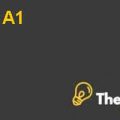Hillside Hospital Case Study Solution
The case introduces Hillside Hospital Located in Chicago, Illinois with a stern commitment, to provide teaching to academic Students, Research and Health care services to its patients. The senior management of the Health care provided firmly believed that, these three objectives were interdependent on one another and could contribute towards enhancing the quality of Medical care. Furthermore, it can be assessed that, since 1925 the hospital has been affiliated with Kent Medical School and engaged in providing teaching services to its medical students. However, the talented medical staff and professionals, had been able to distinguish themselves, from the other teaching staff available in the Kent Medical School. Which could Undergraduates and Gradates alike of Kent Medical, to apply and strive for the 175 resident and intern slots available at Hillside. Furthermore, it can be evaluated that, the Chief of Medicine was Dr. Richard Wells in the Department of Medicine, who was responsible for implementing many changes in the Hillside Hospital. The Department of Medicine being part of an affiliation, was subjected to the Kent Medical School guidelines. Hence, it was assessed by the senior management of the Clinical department that, it needed the guidelines to ensure that, it meets the standards of excellence set by the Kent Medical School.
Classifying the Activities of Dr. Richard Wells
Dr. Richard Wells was appointed as the Chief of Medicine in the Department of Medicine, also known as clinical department. Initially, the Kent Medical Guideline proposed a “gentlemen Agreement” in which, they gave the Department a modest budget and paid compensation to the Doctors, for their teaching and research activities. Similarly they were allowed to make as much money from their private practices carried in the hospital, as long as it didn’t affect their Scholarly activities, in the Kent Medical School. However, after a few years, due to the financial constraints Kent Medical School changed its policies and guideline. In which, it was proposed that, full time doctor or staff compensation should not exceed the amount of compensation received from the Kent Medical school.For their teaching/research activities and the total income compromising of the compensation received, as academic salaries along with additional compensations, professional income should not be twice the academic salary. Whereas, if any individual exceed the amount, then the surplus would be used and retained by the Department. Which in turn, caused a commotion among the Full time member and profession medical staff, as the new guidelines of the Kent Medical School compelled them to share their total income with the clinical Department, which they have never done before. Therefore, the Activities that, Dr. Wells had done or had to do in term of Strategic planning, management control and Operational control are illustrated below.
Strategic Planning
Doctor Well failed to devise the strategic goals and objectives, to sustain the profitability of the hospital. His initial policies to make as much money as doctors intend to make, empowered the doctors and physician, to diverge the effort and performance from teaching to clinical services. Since, these doctors utilized the hospital resources and worked in a way that suited them the best. Leading to ineffective cost allocation, profitability margins and sales of the hospital services, which again effected the financial planning and resource allocation of the hospital.
The Practice plan was implemented with two objectives. At first it expected to regulate the physician’s income so that, the clinical department would be able to comply with the Regulation set by Kent Medical School. Secondly, it would seek to adjust the deficit in the department’s budget, from the excess remuneration generated by the Full time Doctors.
However, it was assessed that, Due to the Abrupt nature of the change and the lack of estimation ability of the future. Dr. Wells didn’t take the steps necessary to implement the change with ease, within the internal functionality of the clinical department. Therefore, Dr. Wells in his haste to meet the requirements of Kent Medical School’s regulation, didn’t give appropriate time to his full time doctors, to adjust and properly accept the change in the Policy.
In addition to this, it was assessed that, Richard Wells lack the ability to effectively communicate with his doctors available in the Clinical Department. As he didn’t communicate the long-term effects of the policy change to the doctors, that would be affected by it. Moreover, he didn’t assess the long-term impact policy change would have on the Doctors. These factors compromise Richard’s ability to develop and implement effective strategies, to meet the regulation requirements of Kent Medical School, due to ineffective planning processes.
Management Control
The lack of management control over the activities of doctor and the non-adherence of KPIs, also lead to the issue faced by trust. Since, all doctors followed their own set of mechanism to cater the patients, it created an ambitious data, which could not be used to analyze the expense, operational cost, patients fees and doctors income.Thus, leading to ineffective allocation of resources and incorrect handling of the staff. Also, the lose control lead to creating an incorrect financial forecast and audit report, which depicted the over allocation of resources to each type of healthcare service. This particular ineffective management led to ineffective and abrupt allocation of resources, giving rise to the financial issues in the trust........................
This is just a sample partial work. Please place the order on the website to get your own originally done case solution.













